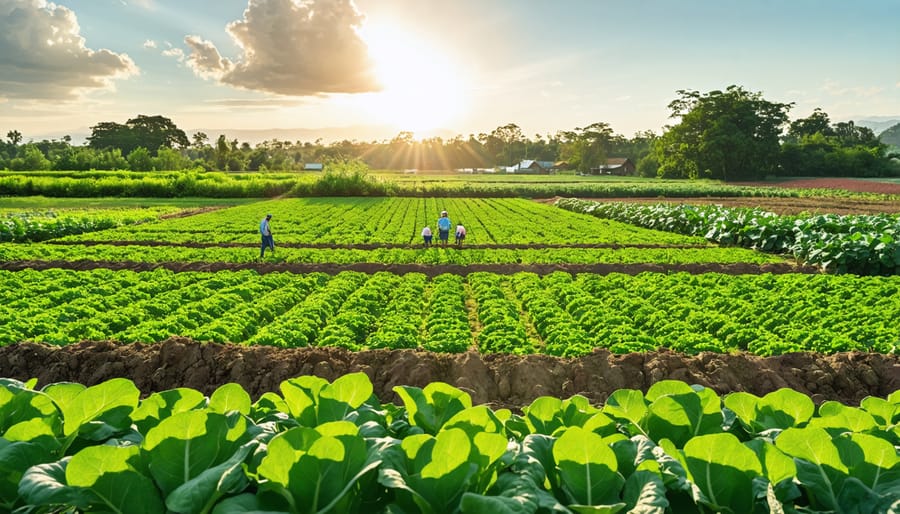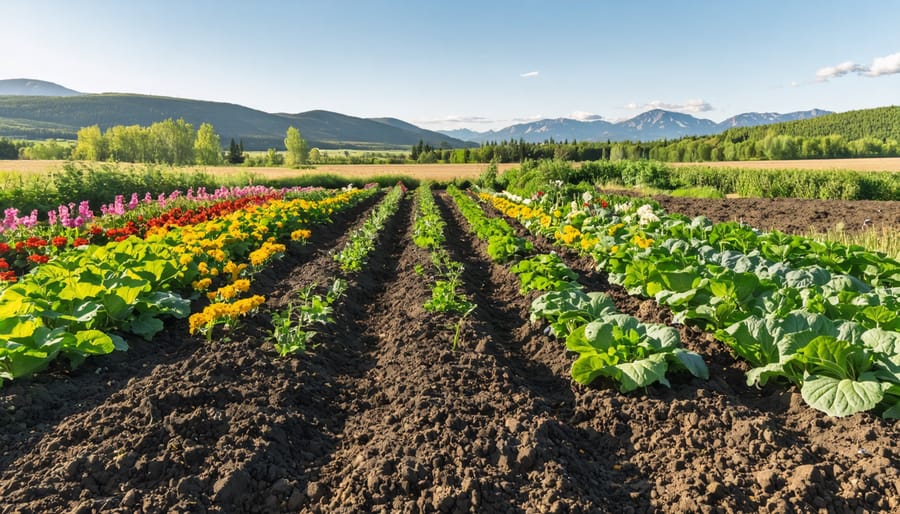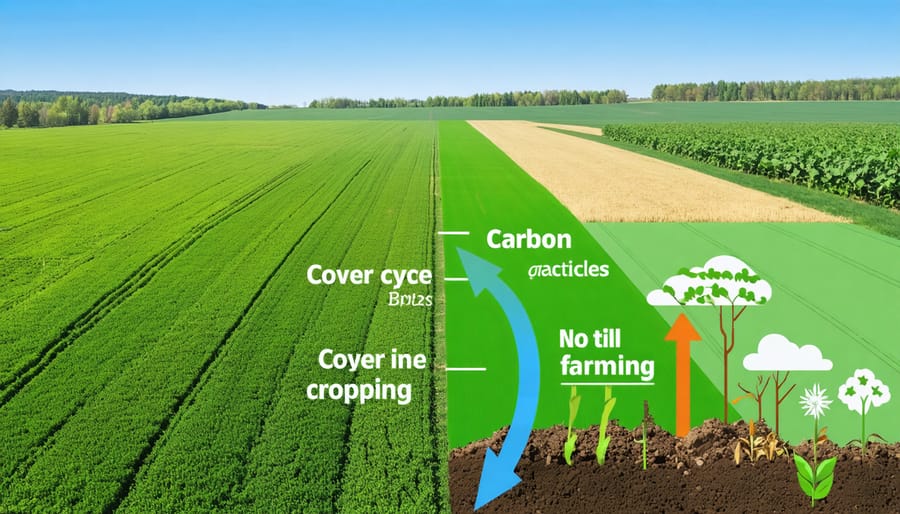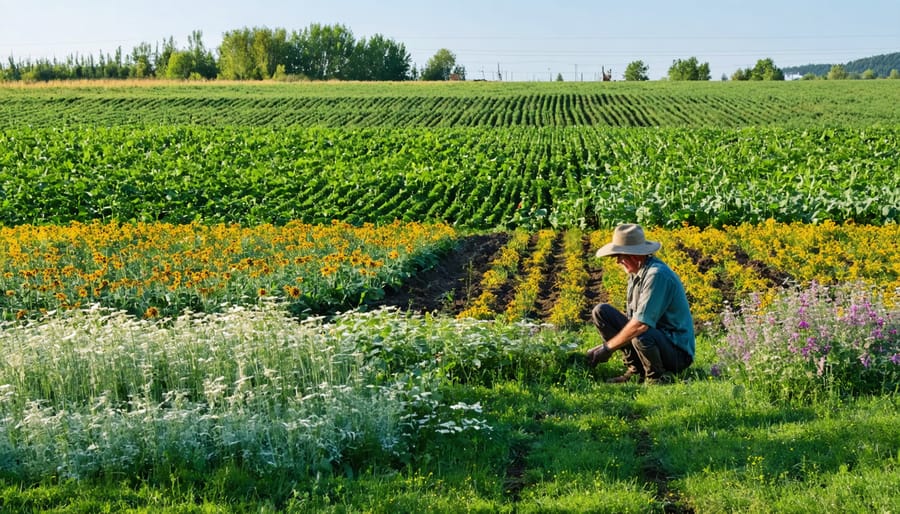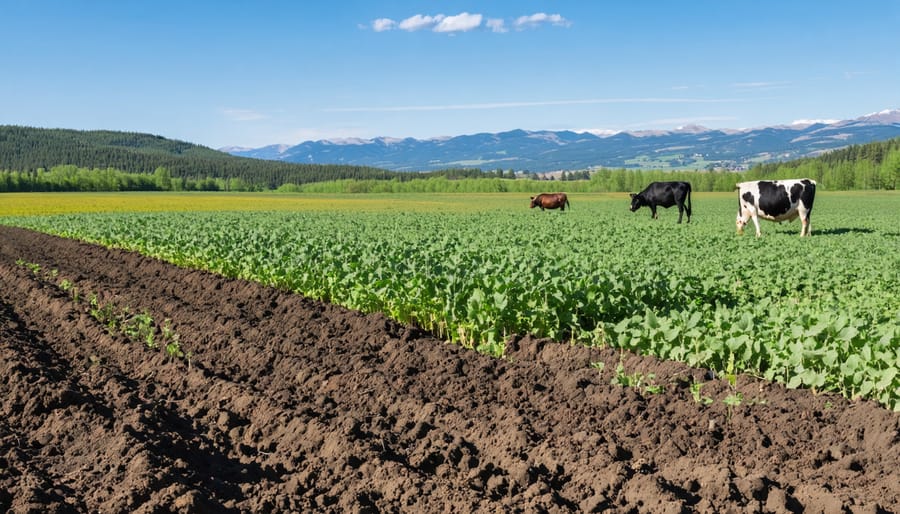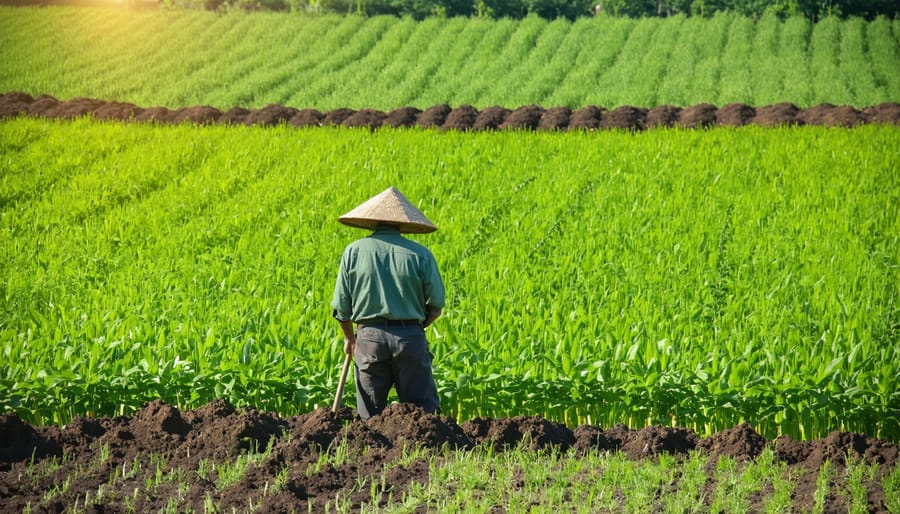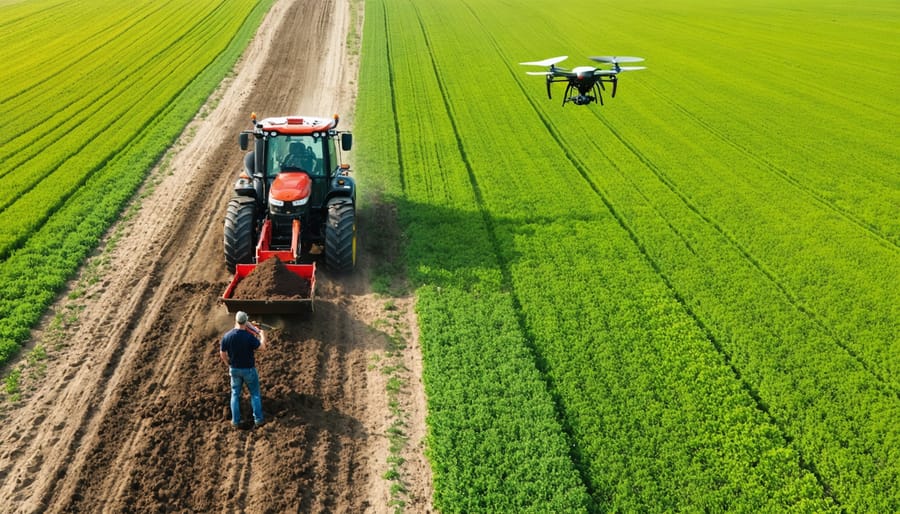Embrace the power of no-till organic vegetable farming and revolutionize your approach to sustainable agriculture. By minimizing soil disturbance, maintaining permanent soil cover, and fostering biodiversity, no-till practices unlock the potential for healthier crops, improved soil health, and a more resilient farming ecosystem. Drawing inspiration from time-honored Indigenous agricultural practices, no-till organic farming empowers Canadian farmers, particularly those in the Alberta region, to cultivate a thriving and productive landscape while preserving the land for future generations. Join the growing movement of innovative growers who are harnessing the science of soil health to drive the success of their organic vegetable farms, and discover how no-till techniques can transform your operation into a model of sustainability and profitability.
The Science Behind No-Till Farming
Soil Health Benefits
No-till organic farming practices significantly improve soil health by enhancing organic matter content, water retention capacity, and nutrient cycling. By minimizing soil disturbance and allowing crop residues to decompose on the surface, no-till systems promote the accumulation of organic matter, which acts as a natural reservoir for essential nutrients and moisture. This soil health boost leads to improved soil structure, increased water infiltration, and reduced erosion. Additionally, the diverse microbial communities thriving in undisturbed soils play a crucial role in nutrient cycling, making nutrients more readily available to plants. The combination of enhanced organic matter, better water retention, and efficient nutrient cycling creates a resilient and productive soil ecosystem that supports healthy plant growth while reducing the need for external inputs. By adopting no-till practices, organic vegetable farmers in Alberta can build and maintain fertile soils that are better equipped to withstand the challenges of drought, heavy rainfall, and temperature fluctuations, ultimately leading to more consistent and sustainable yields.

Reducing Carbon Footprint
No-till organic farming plays a crucial role in reducing greenhouse gas emissions and combating climate change. By minimizing soil disturbance, no-till practices help maintain soil structure and promote the accumulation of organic matter, which enhances carbon storage in soil. This sequestered carbon helps offset emissions from other sources, making no-till a powerful tool in mitigating agriculture’s carbon footprint.
In addition to carbon sequestration, no-till farming reduces the need for fossil fuel-intensive tillage operations, further lowering greenhouse gas emissions. The increased soil organic matter also improves water retention and nutrient cycling, leading to healthier, more resilient crops that require fewer inputs. This, in turn, minimizes the need for energy-intensive fertilizer production and application.
By adopting no-till practices, organic vegetable farmers in Alberta can significantly contribute to Canada’s climate change mitigation efforts while improving their soil health and crop productivity. As more farmers embrace this sustainable approach, the collective impact on reducing agriculture’s carbon footprint will be substantial, positioning Alberta as a leader in climate-smart agriculture.
Implementing No-Till in Your Organic Vegetable Farm
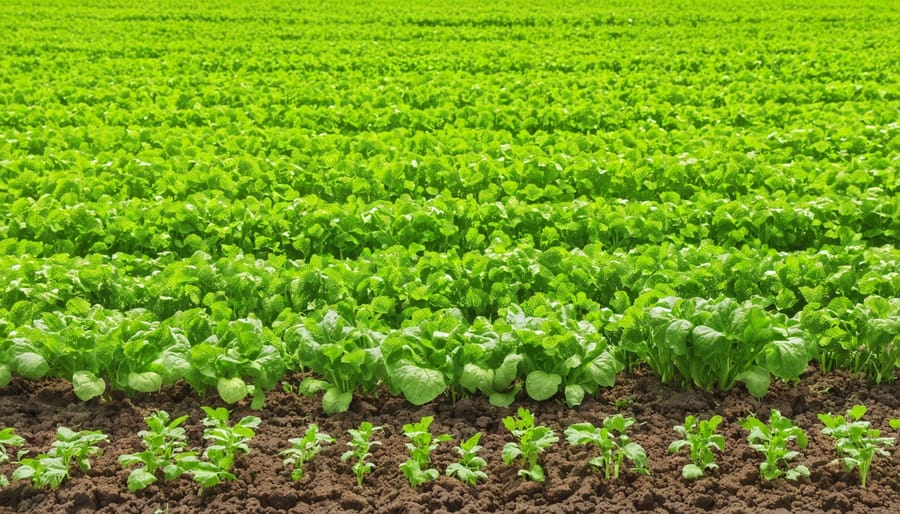
Cover Crop Selection and Management
Selecting the right cover crops is crucial for the success of your no-till organic vegetable farm in Alberta. Consider your local climate, soil type, and the specific benefits you want to achieve, such as nitrogen fixation, weed suppression, or erosion control. For example, legumes like clover and alfalfa are excellent for adding nitrogen to the soil, while grasses like rye and oats can effectively suppress weeds and prevent soil erosion.
When planning your cover cropping strategy, aim for a diverse mix of species to maximize the benefits. Planting cover crops in the fall allows them to establish before winter and provides protection for your soil during the colder months. In the spring, allow the cover crops to grow until they reach the flowering stage, which is when they offer the most nutrients to the soil.
To terminate cover crops without tillage, use a roller-crimper or a mower to flatten the plants and create a dense mulch layer. This mulch will suppress weeds, retain moisture, and slowly release nutrients as it decomposes. Timing is key – terminate the cover crops when they are mature enough to create a thick mulch but before they set seed, which can lead to unwanted volunteers in your vegetable crops.
By carefully selecting and managing cover crops, you can build healthy, resilient soil that supports thriving vegetable plants while minimizing the need for tillage and external inputs. Experiment with different species and techniques to find the best approach for your specific farm conditions, and don’t hesitate to seek advice from experienced organic farmers and agricultural professionals in your community.
Mulching for Weed Suppression and Moisture Retention
Mulching is a critical component of no-till organic vegetable farming, offering numerous benefits for weed suppression and moisture retention. By covering the soil surface with organic materials such as straw, leaves, or compost, farmers can create a physical barrier that prevents weed seeds from germinating and reduces the need for manual weeding or herbicides. Mulch also helps regulate soil temperature by insulating the ground, protecting plant roots from extreme heat or cold fluctuations. This temperature moderation promotes healthy plant growth and extends the growing season in regions like Alberta, where early and late frosts can limit crop productivity.
In addition to weed control and temperature regulation, mulching plays a crucial role in conserving soil moisture. By reducing evaporation and improving water infiltration, organic mulches help maintain consistent soil moisture levels, even during dry spells. This moisture retention is particularly valuable in areas prone to drought or with limited irrigation resources. Mulching also prevents soil erosion by shielding the soil surface from the impact of heavy rainfall or wind.
When selecting mulch materials for your no-till beds, opt for organic options that will decompose over time, contributing to soil health and fertility. Straw, leaves, grass clippings, and wood chips are popular choices, but be mindful of their potential to introduce weed seeds or alter soil pH. Applying a layer of mulch around 5-10 cm deep is generally sufficient to reap the benefits while allowing water and air to reach the soil. By incorporating mulching into your no-till organic vegetable farm, you can create a more resilient and sustainable growing environment that supports healthy crops and reduces labor and resource inputs.
Overcoming Challenges in No-Till Organic Farming
Adapting Your Farm Equipment
Adapting your farm equipment for no-till organic vegetable production is essential for successful implementation. While some tools, such as a no-till drill or roller-crimper, may require new investments, many existing implements can be modified to suit no-till operations. For example, upgrading your planter with no-till compatible components, such as sharp disc openers and depth gauge wheels, can improve seed placement and emergence in high-residue conditions. Similarly, adjusting the settings on your cultivator or investing in high-residue cultivator sweeps can help manage weeds without disturbing the soil structure. When selecting new equipment, look for options designed for no-till systems, such as strip-tillers or low-disturbance subsoilers, which can help alleviate compaction while preserving surface residue. Consult with local equipment dealers, extension services, and experienced no-till farmers to identify the most suitable and cost-effective solutions for your farm. Remember, adapting your equipment is an ongoing process, and it may take some trial and error to find the optimal setup for your specific conditions. By investing in the right tools and continuously refining your approach, you’ll be well-equipped to succeed with no-till organic vegetable farming in Alberta’s diverse growing regions.
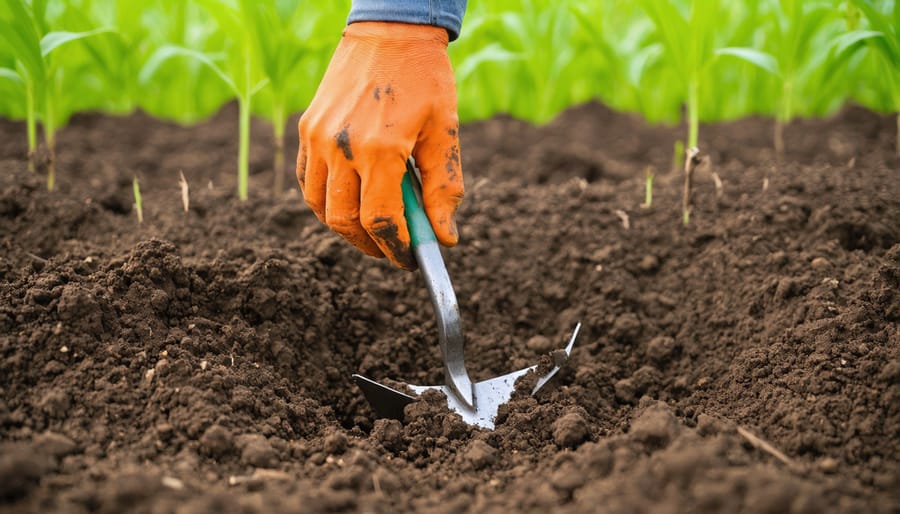
Integrated Pest Management Strategies
In a no-till organic vegetable farm, integrated pest management (IPM) strategies play a crucial role in maintaining crop health and productivity without relying on chemical pesticides. Biological controls, such as introducing beneficial insects like ladybugs and lacewings, can effectively manage pest populations by preying on harmful insects. Crop rotation is another key IPM strategy, as it disrupts pest life cycles and prevents the buildup of pest populations in the soil. By alternating between different plant families, farmers can also reduce the risk of disease and nutrient depletion.
Other non-chemical methods include using physical barriers like row covers to protect crops from pests, and employing cultural practices such as adjusting planting dates to avoid peak pest activity. Monitoring pest populations through regular scouting allows farmers to make informed decisions about when and how to intervene. By adopting a diverse range of IPM strategies, no-till organic vegetable farms in Canada can effectively manage pests while promoting biodiversity and soil health. These sustainable practices not only benefit the environment but also contribute to the production of high-quality, nutrient-dense vegetables for local communities.
Conclusion
No-till organic vegetable farming offers a sustainable solution for Canadian farmers looking to improve soil health, reduce erosion, and increase crop yields while minimizing environmental impact. By adopting practices such as cover cropping, mulching, and crop rotation, farmers can build healthy, resilient soils that require fewer inputs and support thriving plant communities. These strategies not only benefit the environment but also lead to lower production costs and increased profitability for farmers.
As the demand for organic produce continues to grow in Canada, particularly in regions like Alberta, now is the time for farmers to embrace no-till practices. By working together as a community, sharing knowledge, and learning from successful case studies, we can build a more sustainable and resilient agricultural system that benefits both farmers and consumers. Whether you are a seasoned farmer or just starting out, no-till organic vegetable farming offers a promising path forward.
We encourage all Canadian farmers to explore the potential of no-till organic practices on their own farms. Start small, experiment with different techniques, and seek out support from experienced practitioners and agricultural organizations. Together, we can create a vibrant, sustainable future for Canadian agriculture that nourishes our communities and protects our precious natural resources for generations to come.

